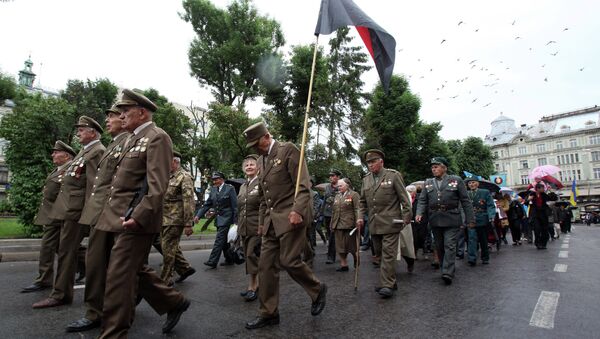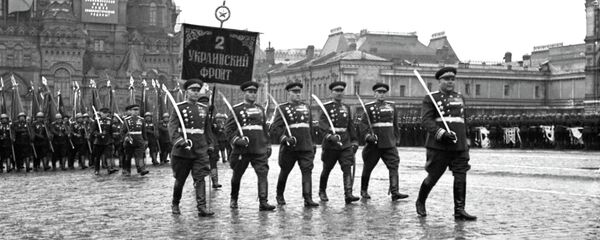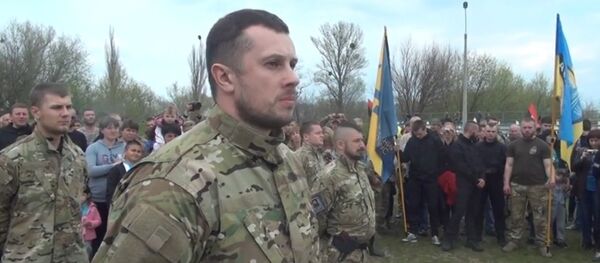Analyzing the posters, Shariy became perplexed by several elements of the campaign, including the fact that among the ten heroes listed, only three are Ukrainians who fought in the Soviet Army.
The journalist points out that five of the posters feature ethnic Ukrainians who fought in the armed forces of other Allied countries during the war, among them two Canadians, two Americans, and a Polish Air Force pilot. But that's not what he finds most concerning.
Shariy focuses on the fact that two of the posters feature Ukrainians who fought for the collaborationist Ukrainian Insurgent Army (UPA) with clear ties to the German army. The journalist looks into the poster of Halina Kuzmenko, who is stated to have "fought in the ranks of the Ukrainian Insurgent Army (UPA) as a machine gunner."
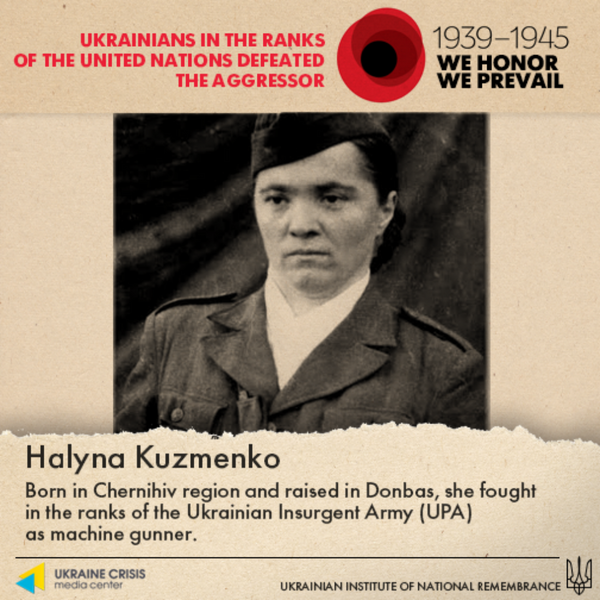
The journalist points out that a simple read of her Wikipedia page shows that for "three years she went under the pseudonym 'Nadia' in the resistance underground in the Ivano-Frankivsk Region," working as a propagandist under UPA-West, commanded by Oleksandr Lutsky. Shariy notes that Lutsky was one of the organizers of the Nachtigall Battalion, which was one of the first of the German Wehrmacht's foreign battalions, formed in February 1941, before the German invasion of the Soviet Union even began.
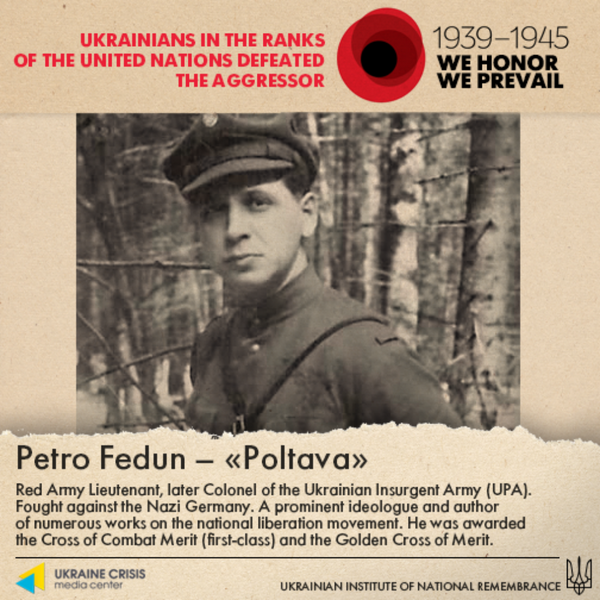
The second UPA member is Petro Fedun, a "Red Army Lieutenant, [and] later Colonel of the Ukrainian Insurgent Army." Shariy notes that Fedun served as a propagandist and key ideologue of the Organization of Ukrainian Nationalists, and that he worked as the head of the political education department of UPA's General Staff. Between 1944-1946, Fedun came to head the political department of the Regional Military Staff of UPA-West; he was killed by Soviet forces in 1951. Shariy points out that the poster also erroneously lists Fedun as having received a Golden Cross of Merit, sarcastically adding that "he received the Silver Cross of Merit in 1947, probably when he was fighting against Nazism."
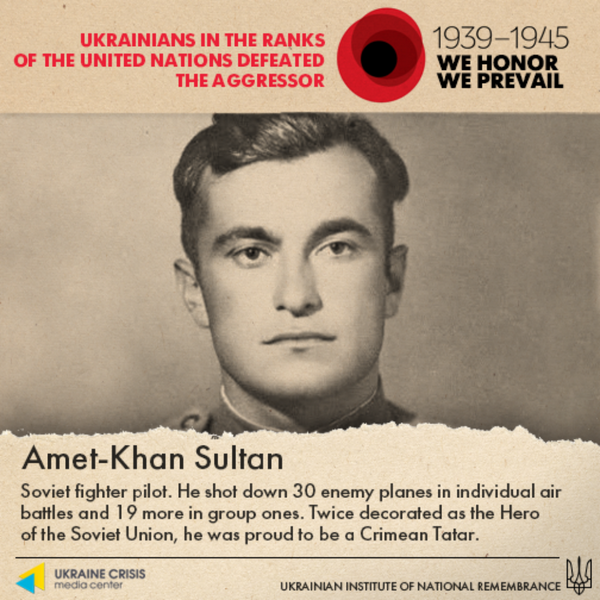
Shariy calls the final hero in the poster campaign, Crimean Tatar Amet-Khan Sultan, the "cherry on the cake," pointing out that "the Institute of National Remembrance might do well to remember that Sultan was born 'a bit before' Crimea became part of Ukraine in 1954."
The indignant journalist concludes by stating that "instead of celebrating Ukrainians who fought against the Nazis in the Second World War…we see Poles, Americans, and Amet-Khan Sultan," along with several UPA fighters. "Congratulations! Happy Victory!" he notes sarcastically.
